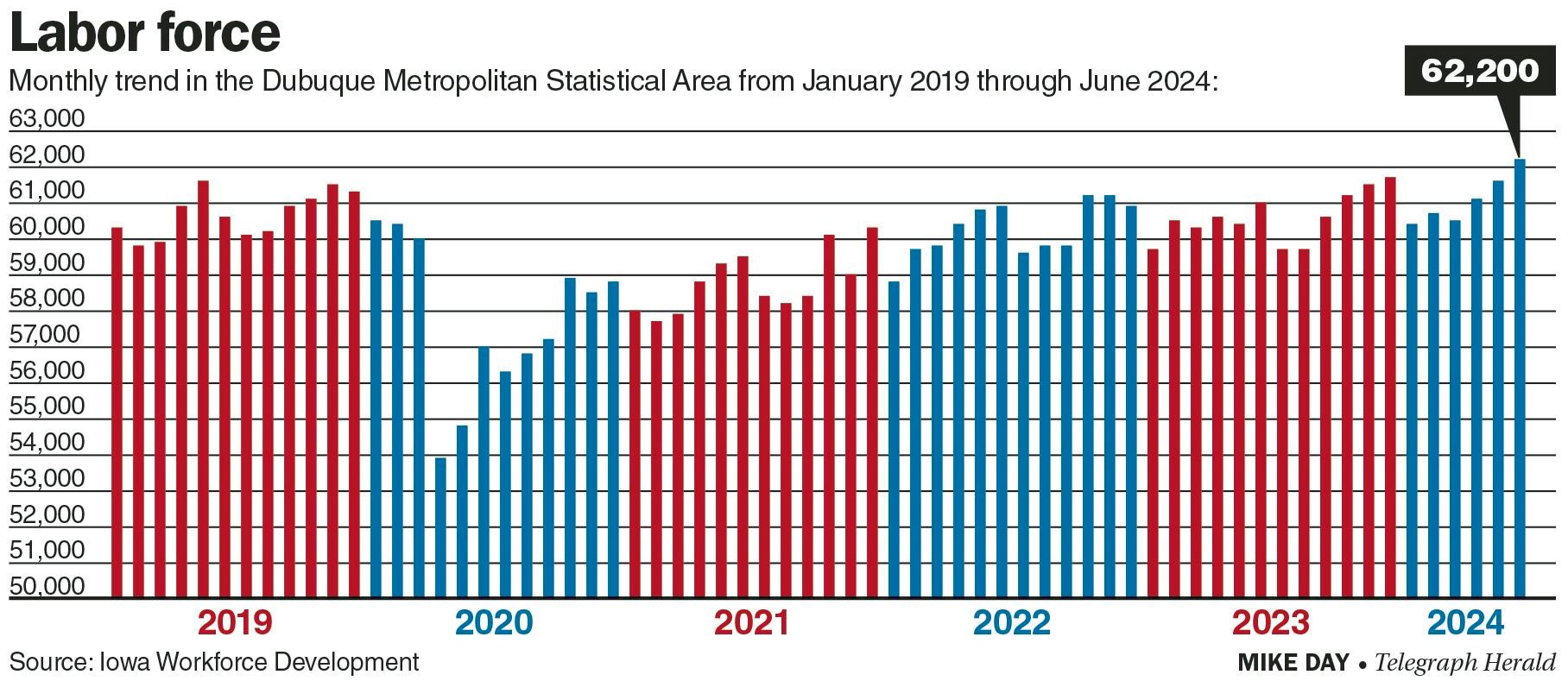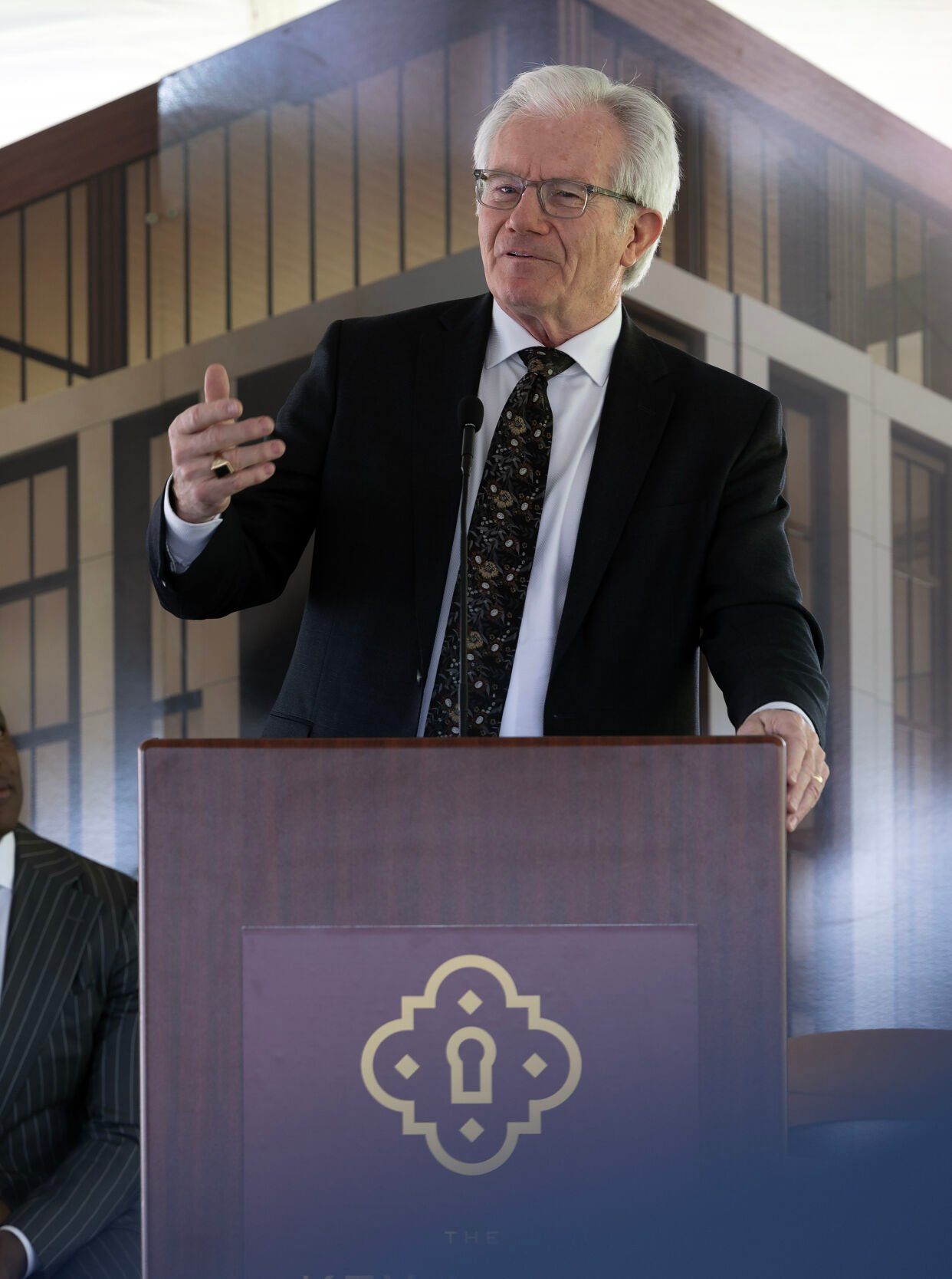Recently-released Iowa data outlines record-high employment levels in the Dubuque area, though local leaders say additional work is needed to ensure that figure continues to rise.
Per figures from Iowa Workforce Development, the Dubuque Metropolitan Statistical Area had 62,200 non-farm employees in June — an all-time record and increase of 1,200 jobs from the same time last year.
The figure represents a 1.97% increase in the local labor market since June 2023 — the third-highest growth rate of all Iowa MSAs over the same time period.
“That’s the highest figure we’ve ever seen,” said Greater Dubuque Development Corp. President and CEO Rick Dickinson. “It’s a record that we’re obviously glad to see, but we still have plenty of work to do to meet our (long-term goals).”
The figure marks a significant step toward GDDC’s goal of increasing non-farm employment in the area to 64,000 workers by the end of 2026 — one of five goals outlined in the organization’s “You Can Be Great Here” campaign.
Dickinson said much of the recent year-over-year growth can be attributed to a net gain of 1,400 service industry jobs since June 2023. The services industry, as broadly defined by Iowa Workforce Development, covers anything from retail and financial services to transportation and education jobs.
Goods production decreased by 200 spots overall over the same time period, however, representing a decrease in manufacturing jobs and similar positions.
Figures from later this summer likely will show an even steeper decline in that area after the announced layoffs of more than 100 John Deere Dubuque Works employees, Dickinson said, though efforts are underway to connect affected employees with other open positions in the area.
“It’s a total of about 130 people, which is something that is very unsettling for the individuals and the families affected by the layoffs but also for the community,” Dickinson said.
In addition to direct services with former John Deere staff, Dickinson said work continues more broadly across the region in terms of worker recruitment, retention and skills training to meet local workforce needs.
The labor market overall is tight, and numerous positions are available across multiple industries, Dickinson added, with an overall unemployment rate of just 2.9% in Dubuque County.
Conlon Construction CEO Tim Conlon said he has felt good about the Dubuque-based company’s employment levels over the past year but said efforts continue to recruit and retain skilled workers for local projects.
The company has an internal training program to assist employees with increasing their skills and knowledge base, he explained, which has helped in some ways to create a “workforce from within” for more advanced positions.
“Everyone in the trades is hiring for skilled workers right now, especially for the positions where people are retiring faster than the new workers are coming in,” he said. “In general, we’re feeling strong in terms of employment, but we’re always looking for more skilled workers.”
Dubuque Community School District has faced a similar situation in terms of filling positions that require unique or specialized training.
“Overall, the district has continued to fair well in our hiring efforts with our challenges mostly revolving around areas that require specialized certification, such as career technical education and special education teachers,” said Mike Cyze, the district’s chief communication officer.
Many other area employers are in a similar spot when it comes to filling open positions, said Dubuque Area Chamber of Commerce Vice President of Government and External Affairs Clare Gill.
Gill said the need for more workers can be seen “across the board” in terms of business size and industry type, which has fueled the chamber’s recent focus on finding ways to support population growth in and around the Dubuque area.
“It’s very rare that we hear someone say, ‘Oh no, we’re not looking for people. We’re fully staffed,’” Gill said. “It’s not that it doesn’t happen, but more often than not we’re hearing from our businesses that people still need people.”
With local unemployment at a relative low, Gill said, the focus shifts from solely engaging area residents who are under- or unemployed to also finding ways to bring more people to the area and expand the labor pool overall.
She said chamber members have been looking at ways to meet that need by pushing for policy changes at the local, state and federal level that would ease labor shortages in and around Dubuque.
The organization is working with local and larger groups, for example, to find ways to better bolster and integrate Dubuque’s immigrant community into the local workforce while also promoting community projects that set Dubuque apart as a community of choice for residents overall.
“The bottom line for us is that we are so pleased to see the labor participation rate at an all-time high, but we hope that it continues to be, and we can’t do that without growing our population,” Gill said.





